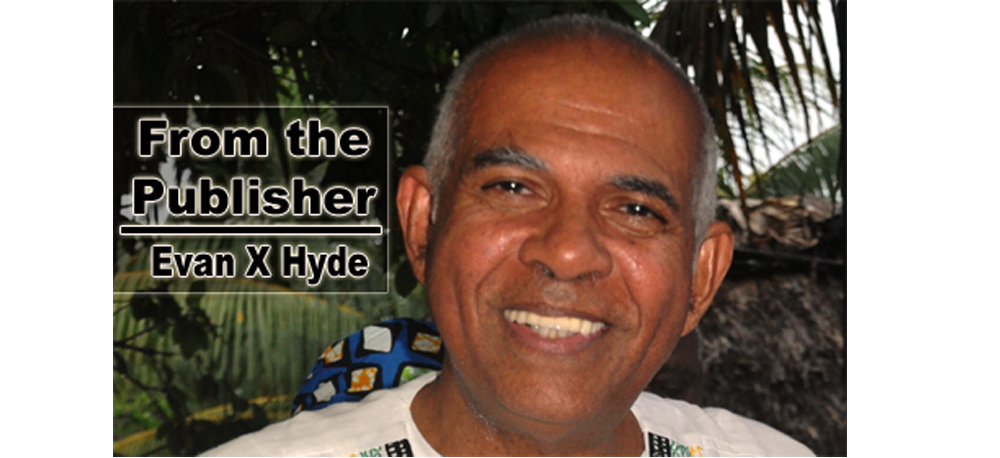I’ve been to Punta Gorda (Peini) perhaps five times in my life. Once, I rode in a Land Rover with my dad, then the Postmaster General, and his driver from Belize City to P.G. This would have been around 1960. The road was very rough from here to there, especially there.
In the summer of 1964, some of us SJC Sixth Form students were hosted by our P.G. classmates — the late Vance Vernon, his younger brother Lennox, Marion Paolino, and some younger SJC students like Edgar McNab and Sam Vernon. We left the city early one morning on the HERON H, a historic motor vessel, and reached Peini in the evening. I enjoyed the voyage by sea.
In April or May of 1969, Charles X “Justice” Eagan, Robert “Rasta” Livingston and I, in the early days of UBAD, went to P.G. (by way of Dangriga) in an old army truck to hold our first and only public meeting in P.G. The road was still very rough.
In the early or middle 1990s, I took a second division football team from our Southside neighbourhood to play a P.G. team on their home field. The road was much better by then.
And then in 2011, if I remember correctly, my wife and I were vacationing in Hopkins, and Wil Maheia, tipped off by Mose, called and insisted I come down to his home territory. With maximum respect for Wil, I did, and Wil took us into some of the rural areas around Toledo. This was my first visit to places like San Antonio, where there is this old Catholic church made of stone. I think the late Fr. John Cull, S.J., may have led the construction back in the ‘50s or so.
(I definitely went to P.G. in 2003 to see the late Herman Lewis about some politics. I’d forgotten that.)
I have relatives who were fishermen and used to sail the Bay of Honduras to visit Guatemalan and Honduran locations like Livingston and Cortes fairly regularly.
A distant cousin of mine, Jimmy Lindo (Bill Lindo’s dad), used to do a lot of logging in the Toledo forests four or so decades ago.
In Belize today, crisis follows crisis — Sarstoon, Chiquibul, cruise terminals, sugar cane disputes, waterfront disputes, coronavirus, and the one which may be the most dangerous of all: customary land rights. Customary land rights for the Maya in Toledo have been ruled on in favor of the Maya by Belize’s highest court — the Caribbean Court of Justice (CCJ).
The customary land rights issue is a huge problem: it has divided Cristina Coc and Greg Ch’oc, who were allies in the early days of the fight for Maya rights in Toledo back in the 1990s or so. The customary land rights issue is huge, because it is threatening to divide the several ethnicities in Toledo.
I have supported the Maya in their fight practically from the beginning, because I believed that the forces supporting their enemies were oil companies. And, as an environmentalist, from those days I knew that the burning of fossil fuels was a major threat to planet earth.
I have said to you that I think the Garifuna and the Maya are Belize’s best soldiers. This is because the Garinagu are totally united and loyal to each other, whereas the jungle know-how of the Maya is unparalleled in Belize. This is just personal opinion, for whatever it’s worth.
In this paragraph is something I want you to investigate and study. You can ask Rigoberta. Many Maya are drafted by force into the Guatemalan army. Their training and field experiences are such that scholars have said that Maya soldiers participated in many of the atrocities against their own people during the Guatemalan civil war (1960-1996).
Maya people constitute at least half of the population of Guatemala. Scholars will tell you that Maya Guatemalans are cruelly oppressed by the Guatemalan oligarchy.
I’m trying to make you see that we are looking at situations in Toledo (customary land rights), the Sarstoon, the Bay of Honduras, and the International Court of Justice in which the Maya have a large and critical role to play.
I am not speaking categorically to you, dear readers. I am only sharing some of the knowledge I have gained over the decades, regarding things of which the majority of Belizeans are not aware. The issue of which I speak is bigger than I. It may be bigger even than the elected government of Belize. Perhaps that is why we have ended up at the International Court of Justice. And Toledo and the Bay of Honduras are the centerpiece of it all. Mighty forces are at play here.
I speak for about 4 percent of Belize City’s adult population. It is probably impossible to calculate what percentage of the Maya are spoken for by Cristina, certainly much more than 4 percent. But when I see Cristina on television, it seems to me that she is under a lot of pressure. I am totally sympathetic. She fought long and hard for what she believes in, and she won at the highest court. But now, it may be that goalposts are moving, may have to be moved. I would not like to be in Cristina’s position. I have spiritual solidarity with her. It’s big, Cristina. Toledo, the stone which the builders rejected, has become the cornerstone of Belize’s future.

